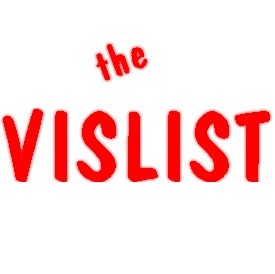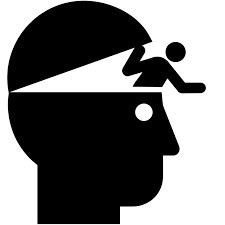Copy Link
Add to Bookmark
Report
VISION-LIST Digest Volume 10 Issue 49

VISION-LIST Digest Thu Nov 14 15:29:56 PDT 91 Volume 10 : Issue 49
- Send submissions to Vision-List@ADS.COM
- Vision List Digest available via COMP.AI.VISION newsgroup
- If you don't have access to COMP.AI.VISION, request list
membership to Vision-List-Request@ADS.COM
- Access Vision List Archives via anonymous ftp to ADS.COM
Today's Topics:
Info Requested on Stochastic Image Generation
Request for underwater images
Image enlargement ref. request
Wanted: objects to measure
Re: corner detection
Re: Handwritten character recognition (ref. request)
ECVP 1992
Re: Visual hand gesture recognition - summary (long)
----------------------------------------------------------------------
Date: Wed, 13 Nov 1991 02:03:23 GMT
From: ge@acsu.buffalo.edu (wang ge)
Subject: Info Requested on Stochastic Image Generation
Dear Colleagues,
I need 2D and 3D stochastic data for simulation. I want to
characterize an ensemble of images by its mean and nonseparable
exponential covariance function. Would you tell me where I could find
algorithms for generating this kind of data? Any relevant information
would be highly appreciated!
Best regards!
Sincerely yours,
Ge Wang
Dept. of ECE
SUNY/Buffalo
------------------------------
Date: Mon, 11 Nov 91 17:10:23 GMT
From: Stephen Marshall <sm@spd.eee.strathclyde.ac.uk>
Subject: Request for underwater images
Does anyone know of a source of underwater images?
We are involved in a project developing new knowledge based techniques for
underwater image analysis and require lots of test data.
Dr Steve Marshall
------------------------------
Date: Wed, 13 Nov 91 11:32:41 PDT
From: Jayson Raymond <jraymond@BBN.COM>
Subject: Image enlargement ref. request
I am working on a hunch and am turning to the collective
experience of this group for suggestions and/or references.
I have a need to enlarge images from low resolution (64x64) to
as much as 10x and would like to retain as much aesthetic appeal as
possible. Pixel replication has its obvious blockiness and bilinear
interpolation its blurriness (perhaps some bi-"spline"-ear
interpolation?). I also have the further major requirement of
implementing it in a near real time environment, though non-real time
references would also be useful.
I am certain this has been well covered before, but not being
from the image processing community, am uncertain as to where to begin.
With some initial direction, however, I can dig around the university
library.
Any suggestions or references would be greatly appreciated.
Jayson M. Raymond
jraymond@bbn.com
------------------------------
Date: 14 Nov 91 09:31:41 GMT
From: tpm@ecs.soton.ac.uk (TP Monks)
Subject: Wanted: objects to measure
I'm working on a computer vision project, and I'm at the stage of
wanting to do some accuracy measurements. I'm after objects,
anything from cubes to complicated shapes, whose dimensions are known,
or can easily be measured. Dimensions need to be anything from of the
order of 10cm to 100cm. And at the moment I'm only milimetre
accuracy, so plastic extrusions would be ok. Eventually I'll
need to move to higher resolutions, but I guess I'll have to get
something made up in our workshop at that stage - unless anyone can
suggest anything suitable.
If you could think of any objects that can be bought, that you have,
or maybe some obvious household object please mail me!
Also, any references to some good work on accuracy testing of a vision
system would be very welcome.
Thanks
Tim Monks Vision, Speech and Signal Processing
tpm@ecs.soton.ac.uk Southampton University
------------------------------
Date: Mon, 11 Nov 91 12:33:18 GMT
From: Han.Wang@prg.oxford.ac.uk
Subject: Re: corner detection
>From: tjc@ecs.soton.ac.uk (Tim Chown)
>I have implemented (in "C") the Moravec and Harris
>operators, and found the latter to be superior.
It is true! In Oxford, we have committed to implement Harris's corner
detector for 3D reconstruction in parallel. It has marginally improved
Moravec's interesting point operator.
However this algorithm employs a heavy gaussian (9x9) over the frist
diveratives, it took long time to compute and is not possible to be
implemented on a machine like Datacube. Second, we found that it fails
at T junctions and chess board junctions. The located corner is either
too far away from true position or undetected, and it changes position
as the angle of corner alters.
In a new corner detector by Brady & Wang(cite below), these mistakes
are corrected (or reduced) and this algorithm can perform 14Hz on a
300 MIPS machine in live environment. It takes the measure of surface
curvature.
@inproceedings{wb91,
author = "Han Wang and Mike Brady",
title = "Corner Detection for {3D} Vision Using Array Processors",
booktitle = "BARNAIMAGE 91",
address = "Barcelona",
month = "Sept.",
publisher = "Springer-Verlag",
year = 1991 }
This paper also gives background review of recent corner detectors and a
comparison of Harris algorithm and Wang-Brady algorithm.
h
------------------------------
Date: Wed, 13 Nov 91 09:42:50 EST
From: atul@nynexst.com (Atul Chhabra)
Subject: Re: Handwritten character recognition (ref. request)
The best place to start looking for current references is the
Proceedings of the First International Conference on Document
Analysis and Recognition (ICDAR'91). This conference was held
Sept 30 through Oct 2, 1991, at St. Malo, France, and was
jointly organized by IAPR and IEEE.
Atul K. Chhabra Phone: (914)644-2786
NYNEX Science & Technology Fax: (914)644-2211
500 Westchester Avenue Internet: atul@nynexst.com
White Plains, NY 10604
------------------------------
Date: Wed, 13 Nov 1991 19:59:47 -0500
From: vision@ads.com
Subject: ECVP 1992
This is being distributed a second time because of a foul up with my
names file. As a result a very large number of people did not receive
this notice. For those to whom this is a duplication, my apologies.
Pete
ECVP 1992
The 15th European Conference of Visual perception will be held in Pisa
next year, starting on the evening of 30 August, and finishing in the
afternoon of 3rd September, 1992.
As always the conference aims to provide a pleasant forum to present
and discuss recent research advances in the field of visual perception.
This year, the major themes will be:
Neurophysiological bases of visual perception
Brightness
Development and ageing
Motion
Visual learning and memory
18 invited symposia will be presented by:
Jan Atkinson Horace Barlow Giovanni Berlucchi
Ol Braddick Maurizio Corbetta Adriana Fiorentini
Peter Lennie Lamberto Maffei Bill Merigan
Mortimer Minshkin Michael Morgan Tony Movshon
Ken Nakayama Bob Shapley Wolf Singer
Heinz Wassle Paul Whittle Bob Wurtz
Free communications are invited from all branches of visual perception,
not restricted to the major conference themes. They will be either brief
verbal deliveries (15 minute papers), run in two parallel sessions, or
posters. Both are regarded as equivalent scientific standing, and
abstracts of both will be published as a supplement to Perception.
Abstracts should be submitted in triplicate, together with a completed
application form, by 29 February, 1992.
Further information can be obtained from:
David Burr or Concetta Morrone
Istituto di Neurofisiologia del CRN
Via S. Zeno 51, Pisa, Italy
Tel +39 50 559719 Fax +39 50 559725
------------------------------
Date: Thu, 14 Nov 91 15:07:46 +0100
From: ahmad%bsun7@ztivax.siemens.com (Subutai Ahmad)
Subject: Visual hand gesture recognition - summary (long)
Some time ago I asked about references to work on recognizing hand
gestures from camera images. Here's a summary of the replies I
received. If anyone knows of any other work, I'd very much appreciate
hearing about it!
Subutai Ahmad
Siemens AG, ZFE IS INF-1, Phone: +49 89 636-3532
Otto-Hahn-Ring 6, FAX: +49 89 636-2392
D-8000 Munich 83, Germany E-mail: ahmad%bsun5@ztivax.siemens.com
......................................................................
From: tmb%ai.mit.edu@ztivax (Thomas M. Breuel)
I have written some prototypes for some simple gesture recognition.
Other people at the lab have written some code for recognizing "nodding"
and "shaking one's head". Nothing has been written up, though.
(I am thinking about continuing this work when I start at my new job
after finishing my Ph.D.)
Thomas.
......................................................................
From: js%vax135%att.att.com@ztivax
Your question regarding Hand Gesture Recognition has been
forwarded to me.
I have been running a hand gesture recognition project for
over 2 years. With help of summer students we have built
two versions of a system recognizing gestures in 2-D.
The current speed is over 10 video frames/sec with very
good recognition results. The system is 100% trainable,
it uses several Machine Learning methods to construct
gesture models automatically.
In toy applications I am using the system (I call it GEST)
as input interface to 3-D graphics. We have something like
a flight simulator where a camera flies through a simulated
room, controlled entirely by hand gestures.
The continuation of this work involves 3-D gestures, and
motion. I expect some results quite soon.
Jakub Segen
......................................................................
From: "David A. Honig" <honig%brooks.ics.uci.edu@ztivax>
Dear Dr. Ahmad,
Other people have done related work. In visual perceptual psychology,
Gunnar Johansson introduced in the 1960's the point-light-displays that I
will use, and found that about a second's exposure to about a dozen lights
on a walking figure is sufficient for naif observers to recognize the walker
and their movement.
The group in this reference:
\bibitem{poizner2} Poizner H., Bellugi U., Lutes-Driscoll V. {\em
Perception of American Sign Language in dynamic point-light displays} in
{\em J. Exp. Psychol.: Human Percept. Performance 7} pp 430-440 1981.
is looking at how the recognition of American Sign
Language is degraded as noise is introduced.
John Rubin's dissertation (MIT, 1986) on motion boundaries is useful.
Tsotos at U Toronto developed a system to analyze heart-wall motion from
x-ray movies.
A fellow named Nigel Goddard (I have him as: goddard@b.gp.cs.cmu.edu)
has been working on a thesis with a similar goal but different approach;
he's no doubt farther along.
Marr & Vaina wrote a paper on a state-motion-state representation
that will be of some use to you.
There are a some other names I should mention, eg., turn-of-the-century visual
psychologist Albert Michotte, who studied the perception of causality;
Rashid; Webb & Aggarwal. And some modern psychologists who have studied
articulated object perception, among them James Todd, Dennis Profitt,
J.E. Cutting.
......................................................................
From: Craig M. Kanarick <kanarick@media-lab.media.mit.edu>
You should try to contact Dick Bolt (bolt@media-lab.media.mit.edu)
here at the MIT Media Lab. His group, the Advanced Human Interface
Group, has been working on that very problem for about 5 years
now, I think.
Good luck,
cmk
......................................................................
From: jim@kaos.stanford.edu (James Helman)
It's a long way from full gesture recog, but check out the VideoHarp
described in:
Dean Rubine and Paul McAvinney, "Programmable Finger-tracking
Instrument Controllers", Computer Music Journal, Vol. 14, No. 1,
Spring 1990.
jim
......................................................................
From: defee%cs.tut.fi@ztivax (Irek Defee)
Hi,
While I don't know about research covering exactly this topic, a lot of
work is going on in the computer graphics area on the modeling of
humans. This seems to be in a way complementary to the recognition problem
since it looks that for recognition, we need models.
You may find some relevant information and references in two recent papers:
1. Rijpkema H., Girard M., Computer Animation of Knowledge-Based Human
Grasping - Computer Graphics, vol.25 ,NO. 4, July 1991.
2. Monheit G., Badler N., A Kinematic Model of Human Spine and Torso -
IEEE Computer Graphics and Applications, March 1991.
A lot has been done in the video coding area to model and recognize human
face and its expressions, e.g.,
1. Kaneko, M., et. al., Coding of Facial Image Sequence Based on a 3-D model
of the head and Motion Detection - Journal of Visual Communication and
Image Representation, vol.2, No.1 1991, pp.39-54.
This is diffcult topic. Please inform me about your results in the
literature search since I have some interest in this area.
......................................................................
From: mtc%aifh.edinburgh.ac.uk@ztivax
Dear Ahmad,
human movement has been investigated for years
at the DIST department of the University of Genova, Italy.
The name of the project was NEM. It was aimed at building a
"movement simulator" which you might find interesting.
Contact: prof. Renato Zaccaria (zac@ugdist.uucp or
zac@dist.dist.unige.it)
Emanuele Trucco
Dept. of Artificial Intelligence
Univ. of Edinburgh
......................................................................
From: James.Matthew.Rehg%ius4.ius.cs.cmu.edu@ztivax
Hi. I am working on a related problem for my thesis under Dr.
Takeo Kanade at Carnegie Mellon University. We are interested
in tracking human arm/hand motion using sequences of intensity
images. One possible application would be the gesture
recognition problem you described.
There is also a group at ETL in Japan working on human body
motion analysis. A paper by Yamamoto and Koshikawa in the
most recent CVPR describes their approach.
Hope this helps.
Jim Rehg
------------------------------
End of VISION-LIST digest 10.49
************************






















